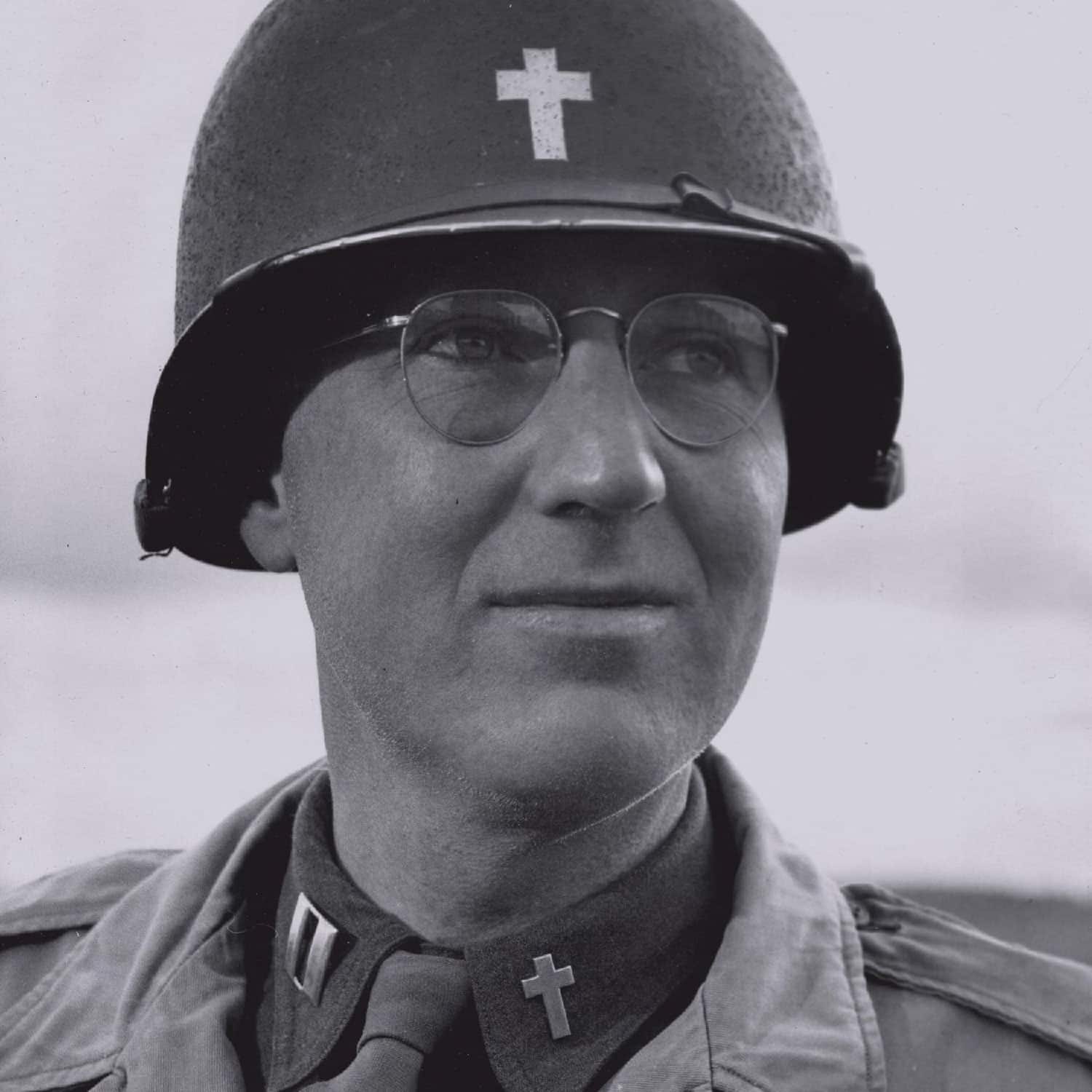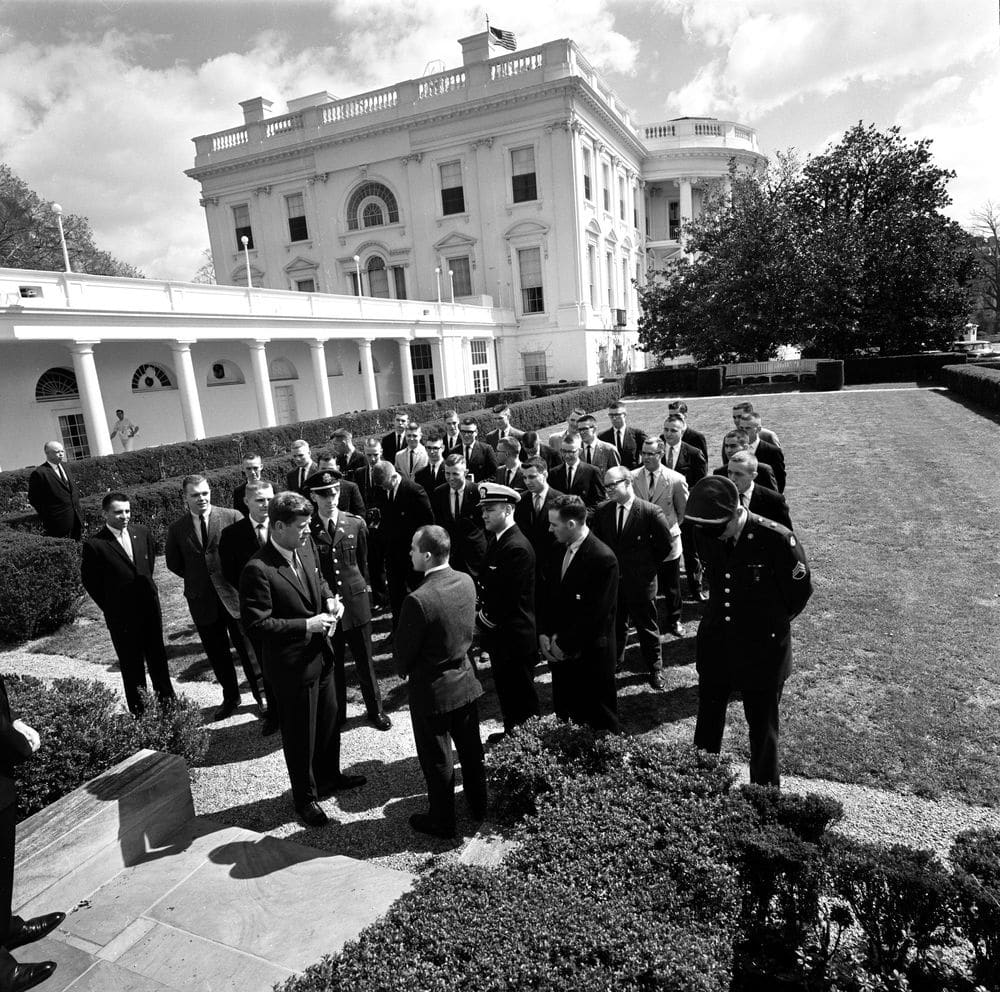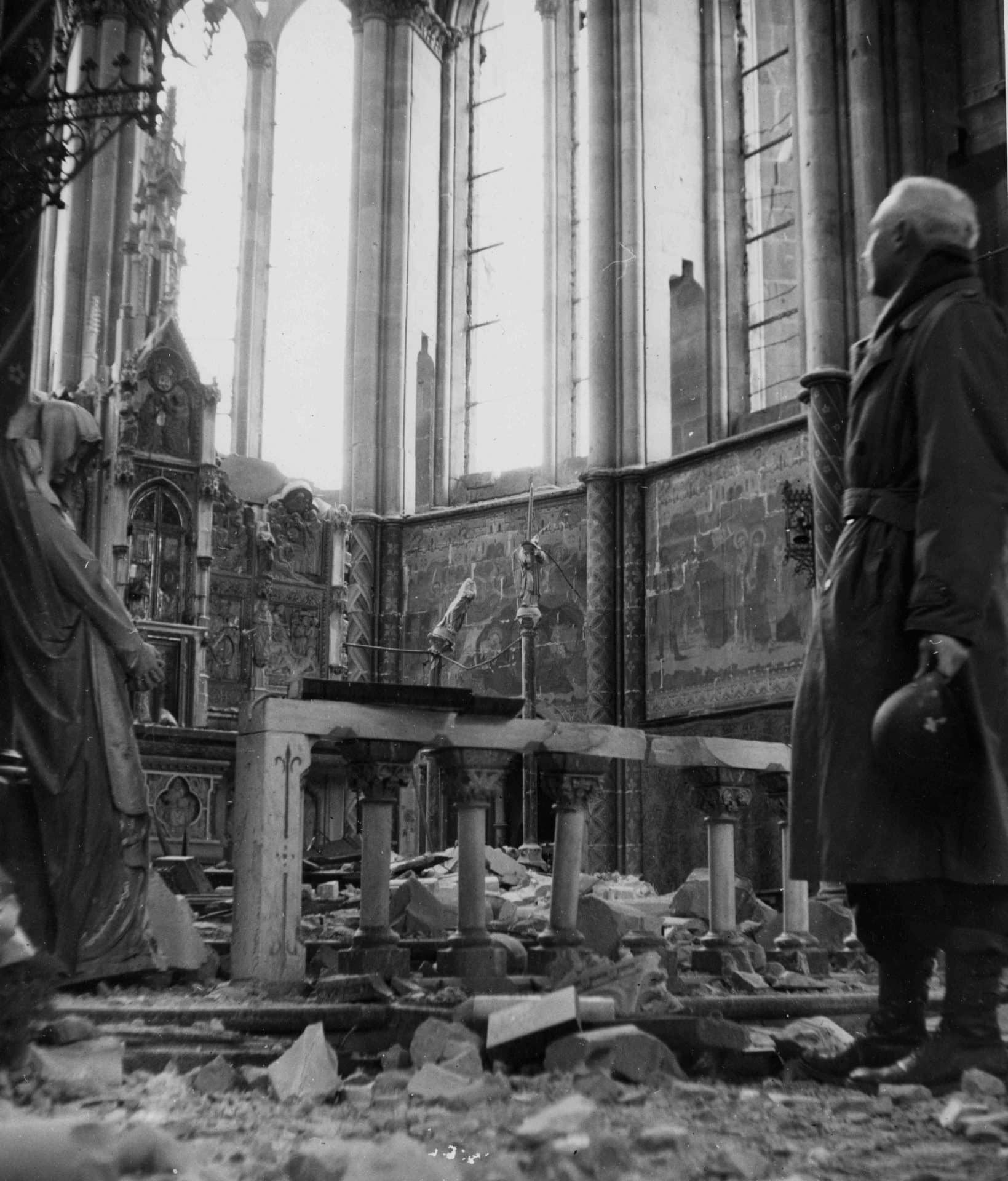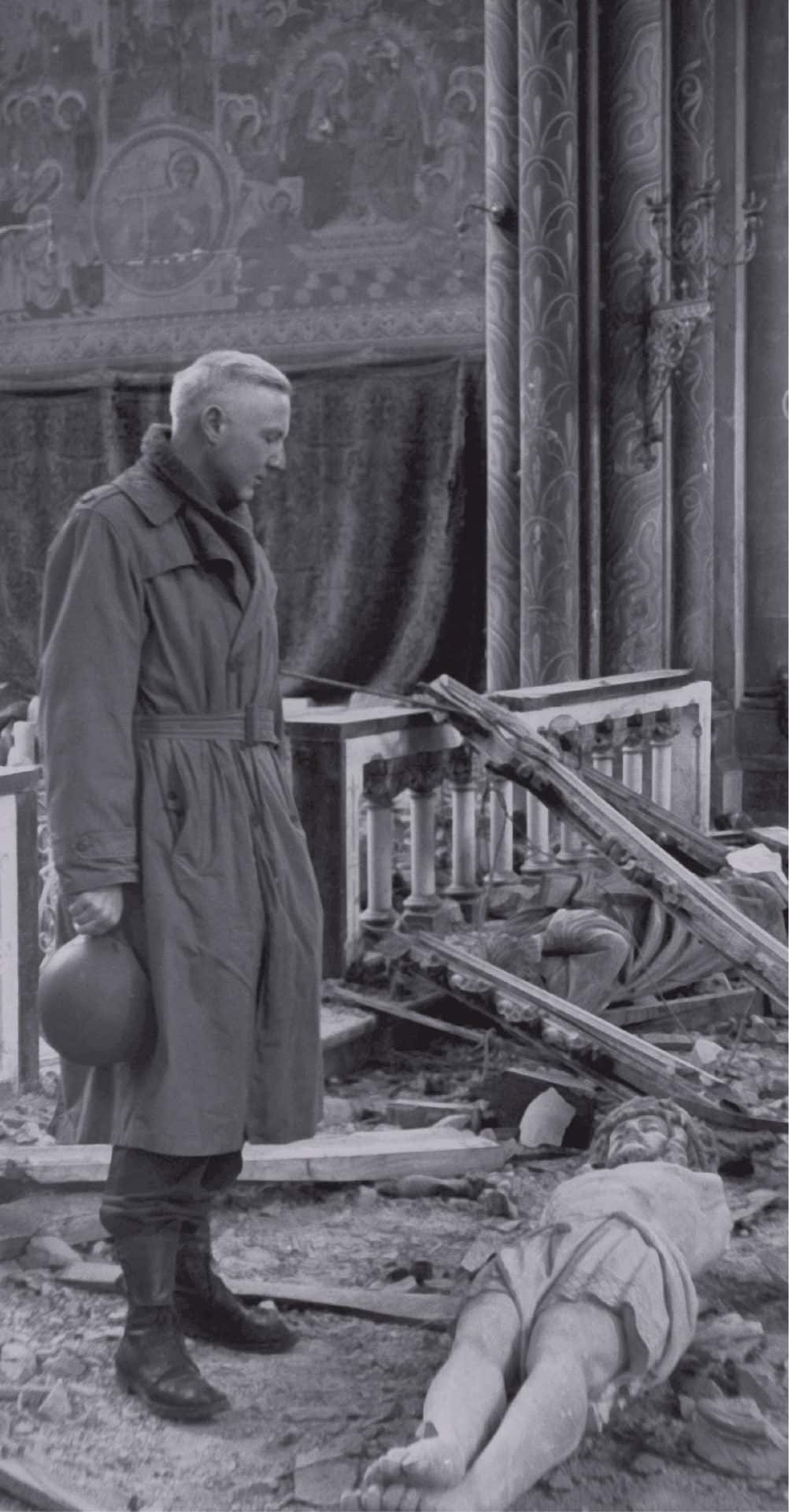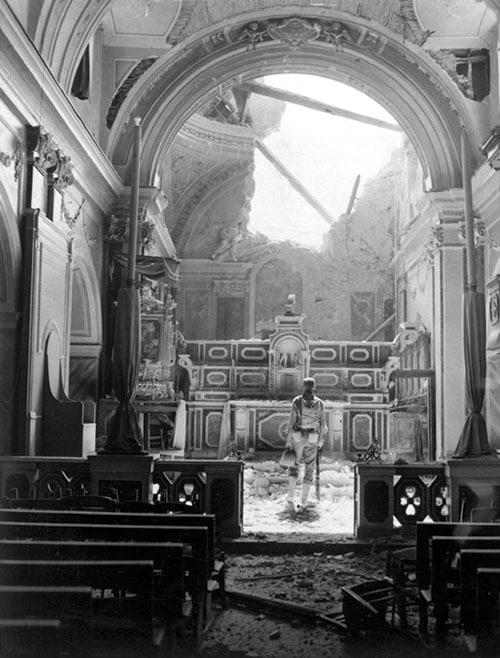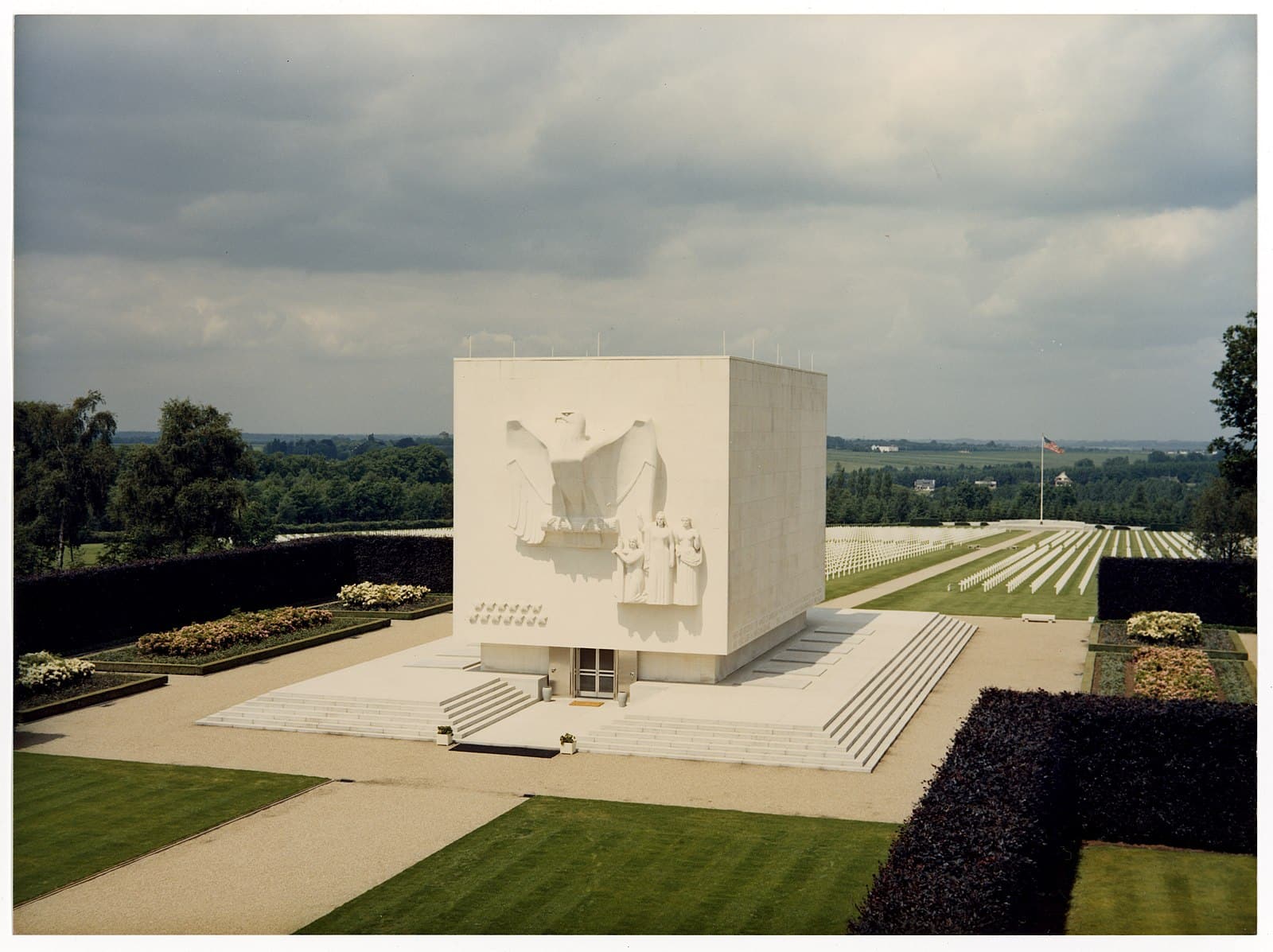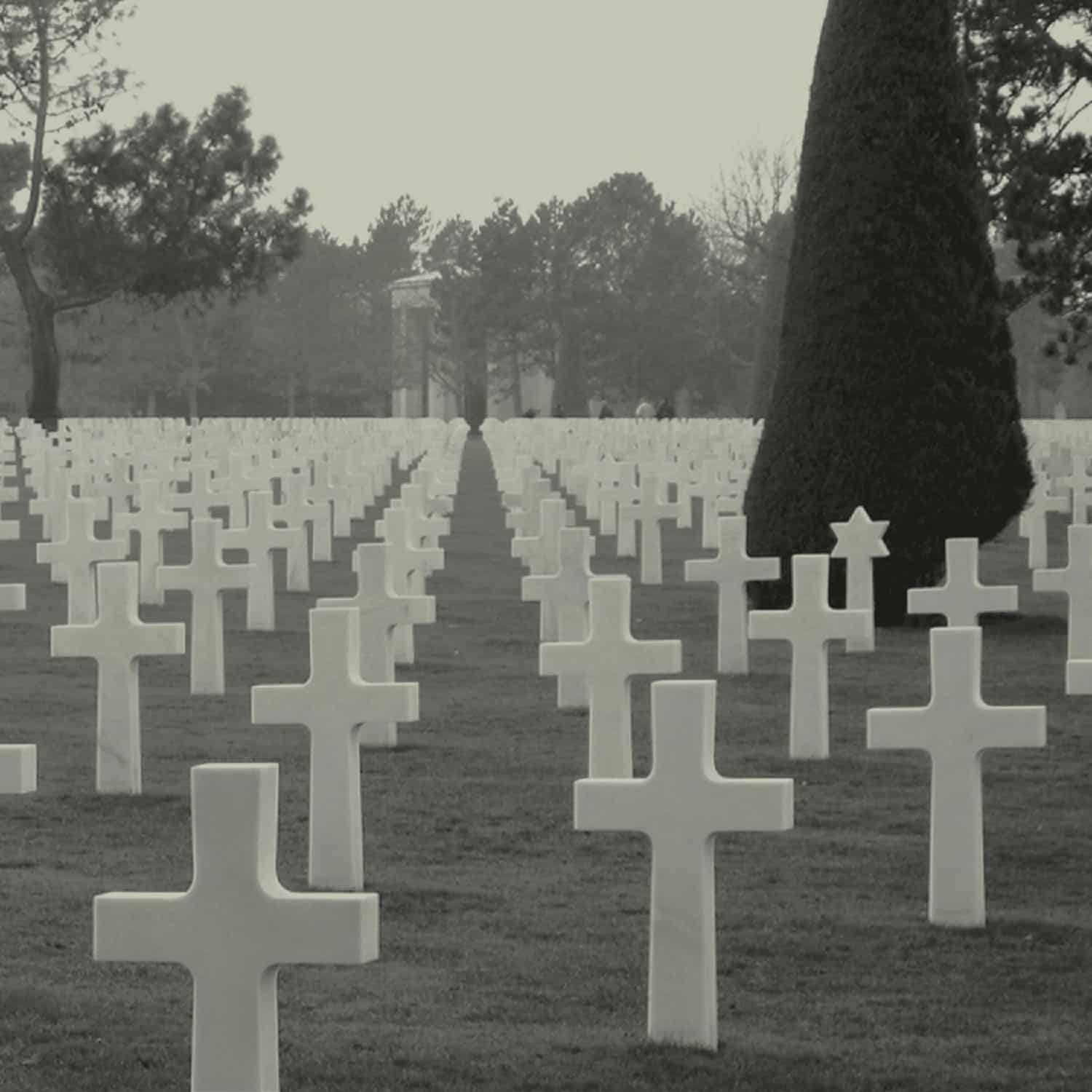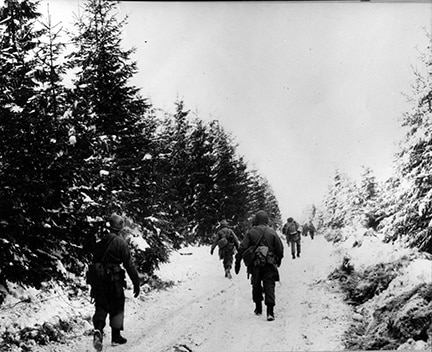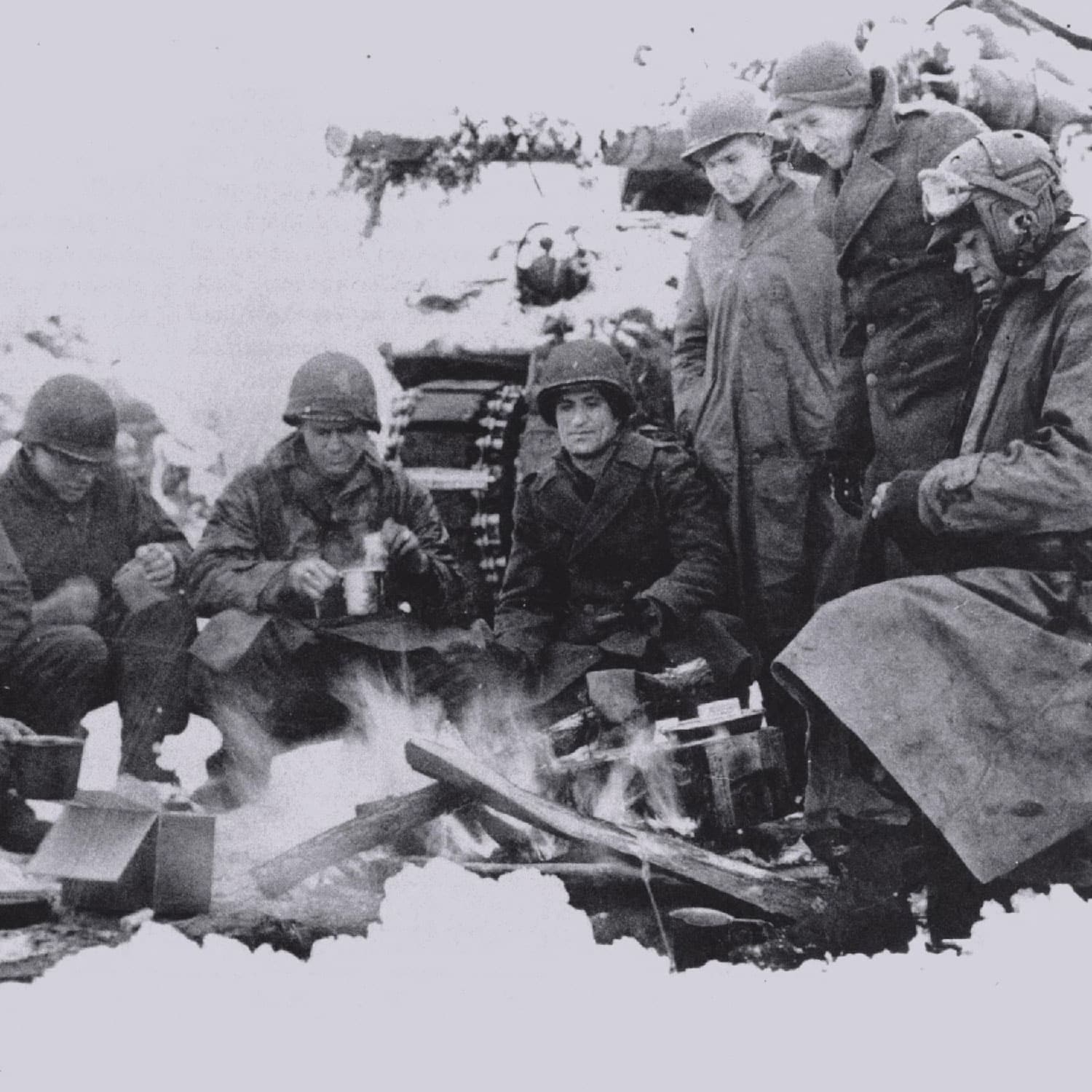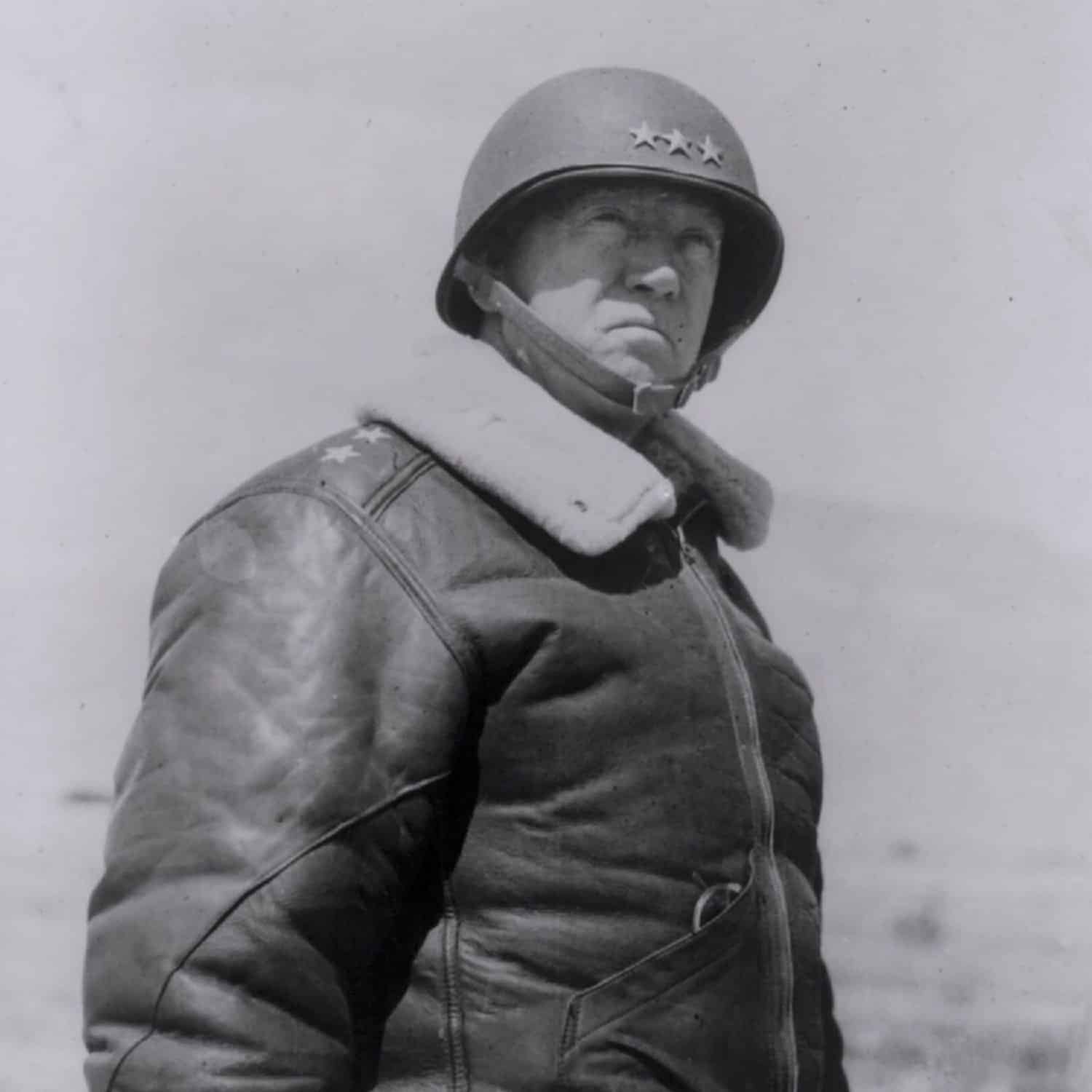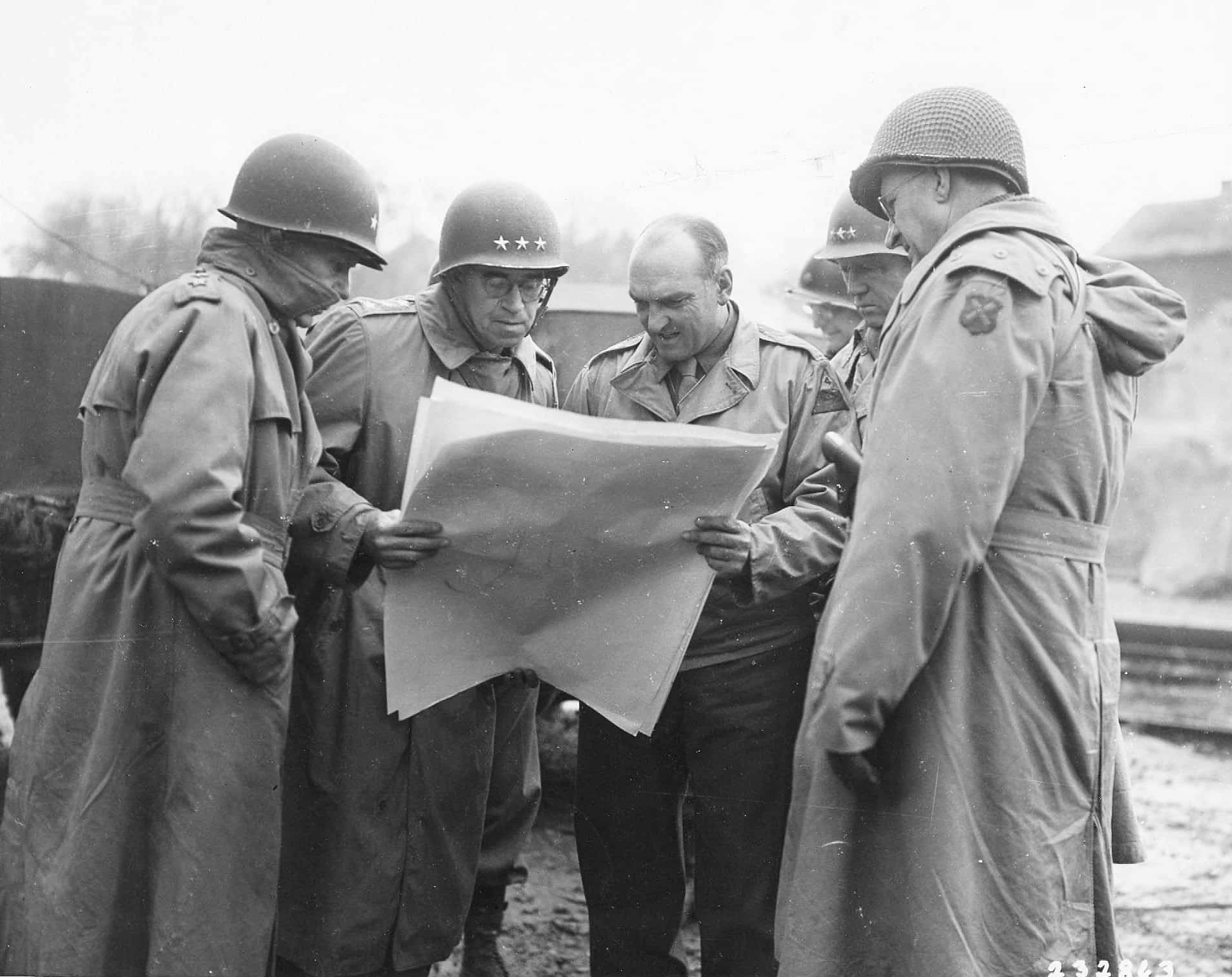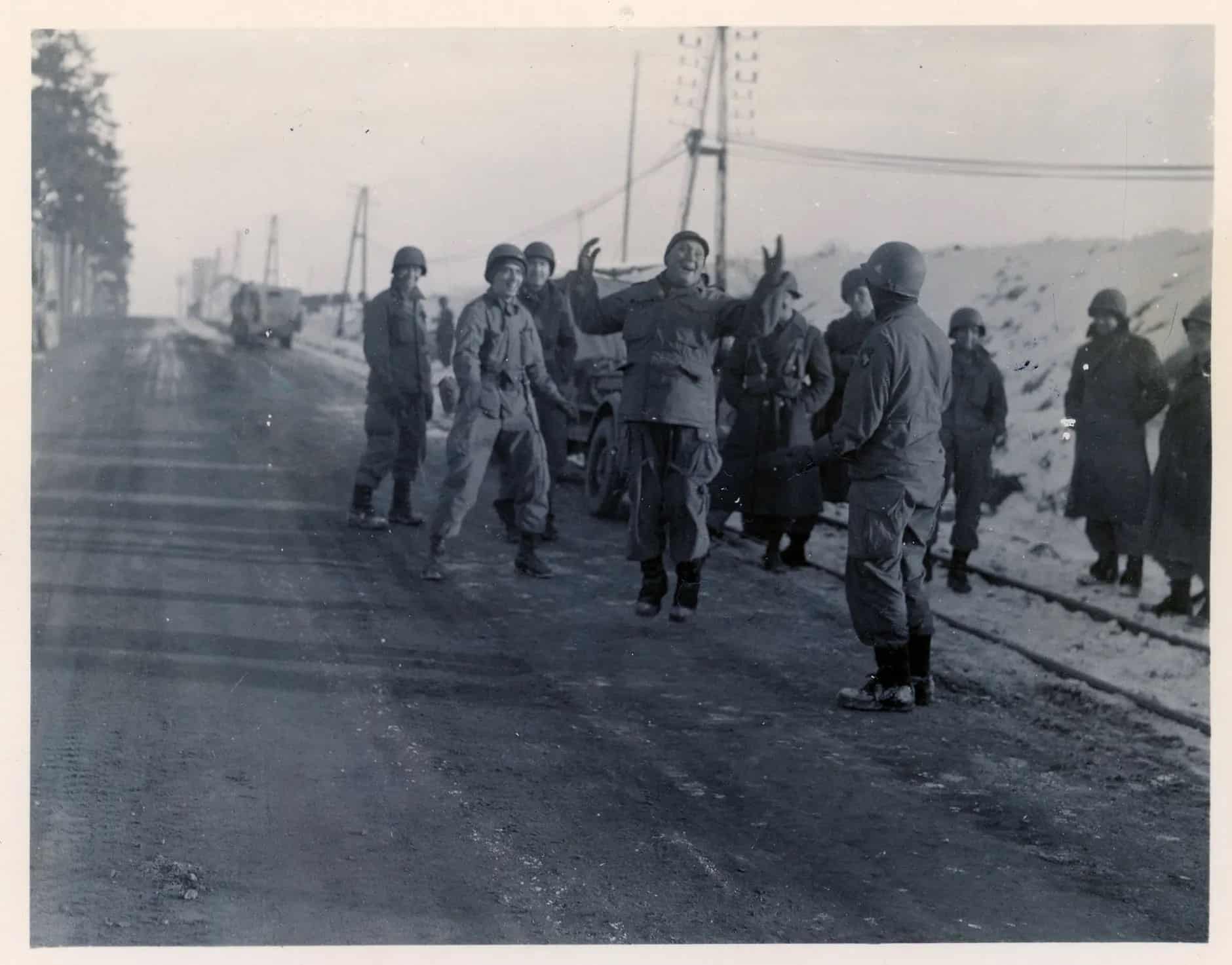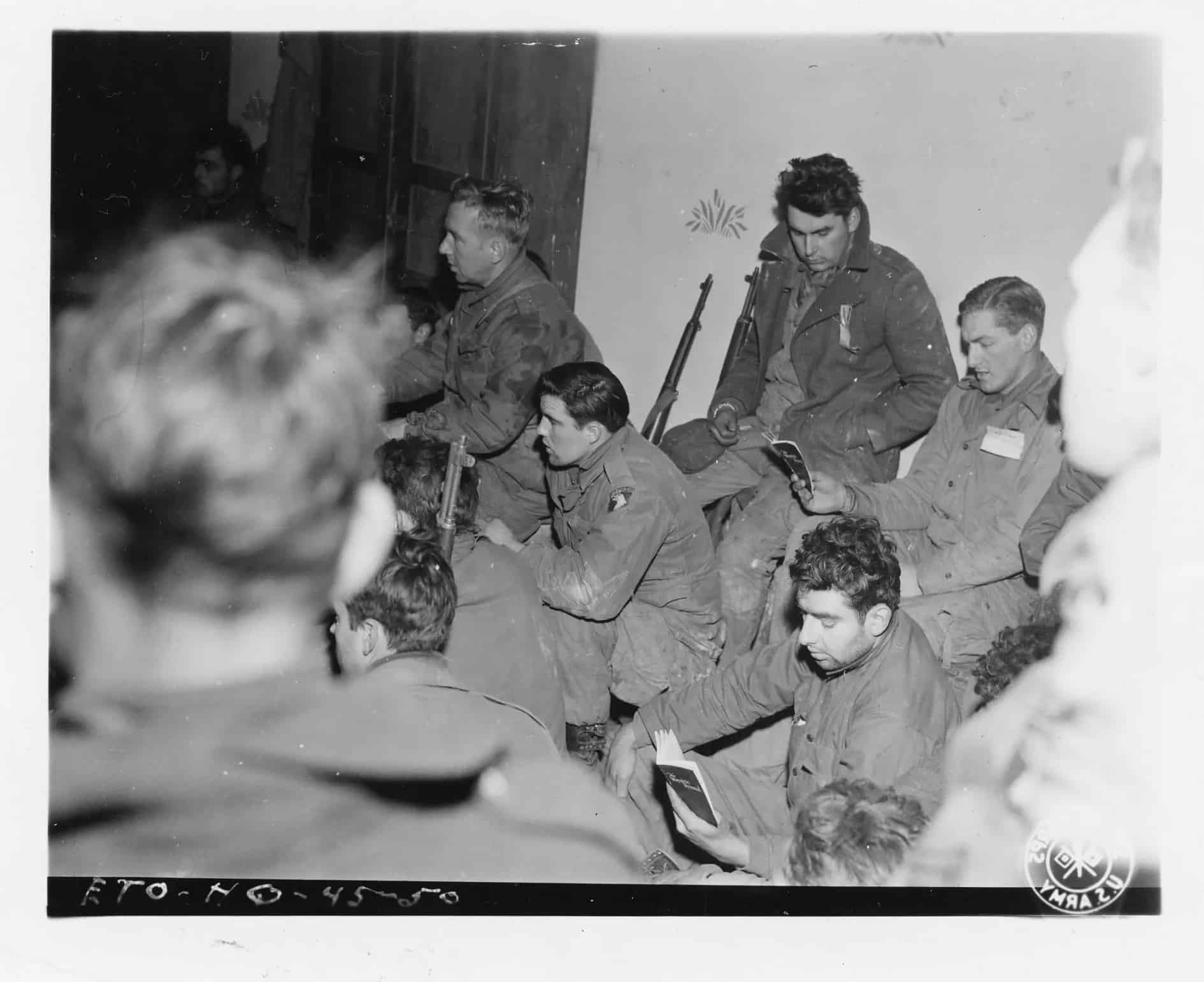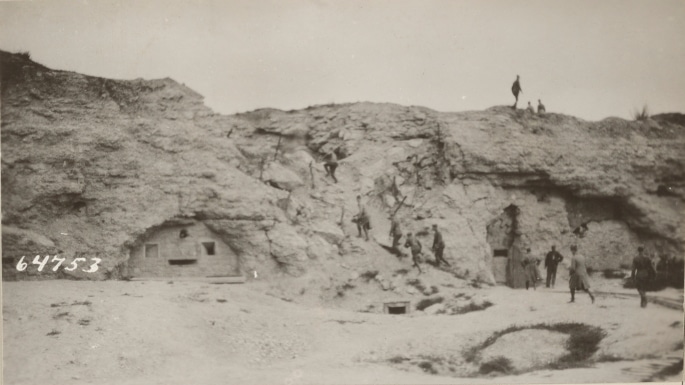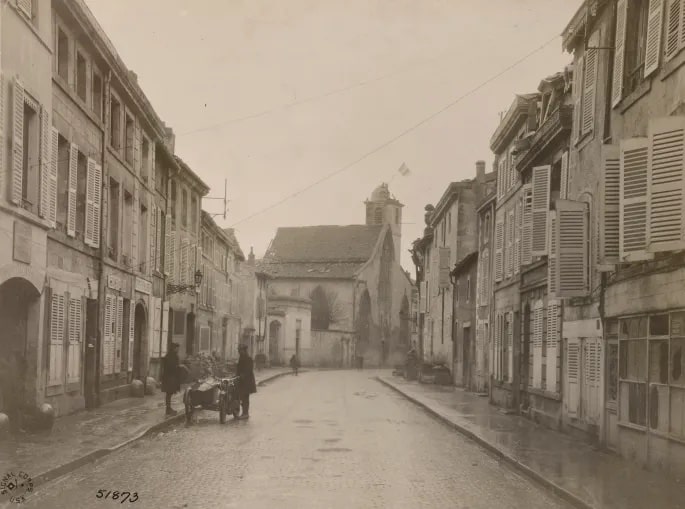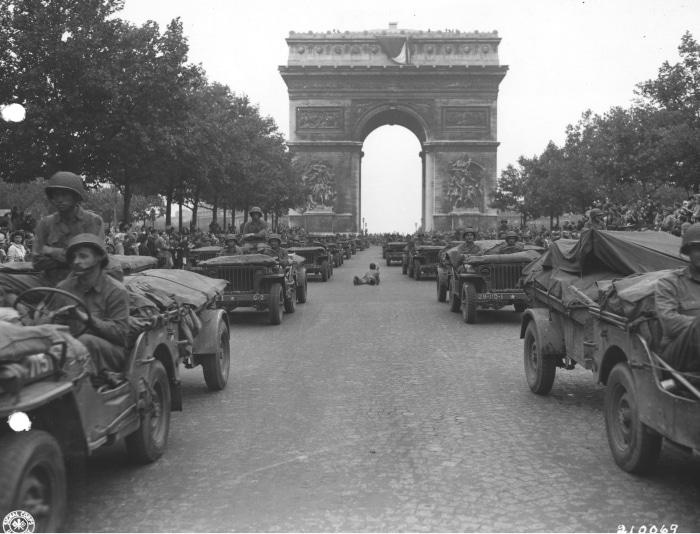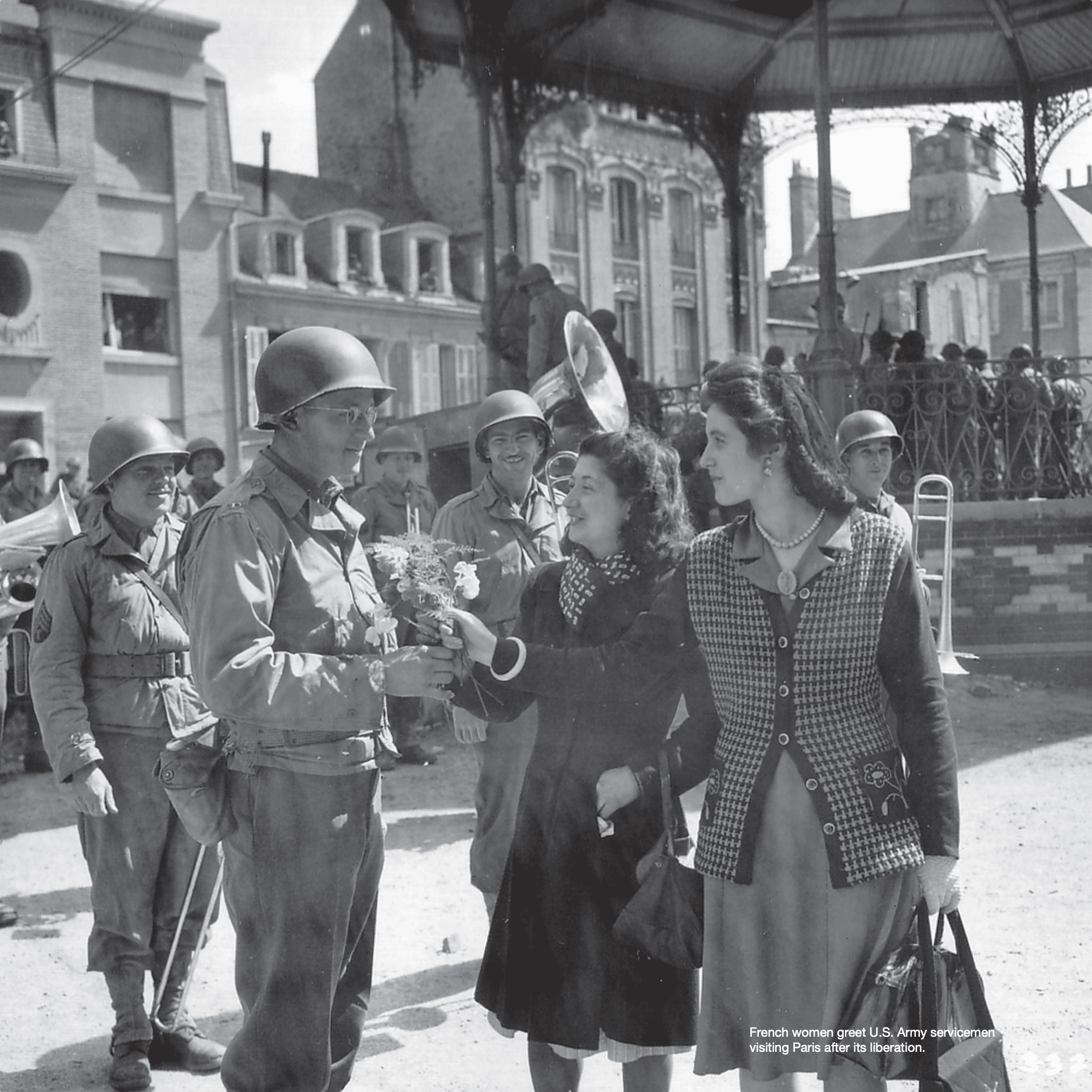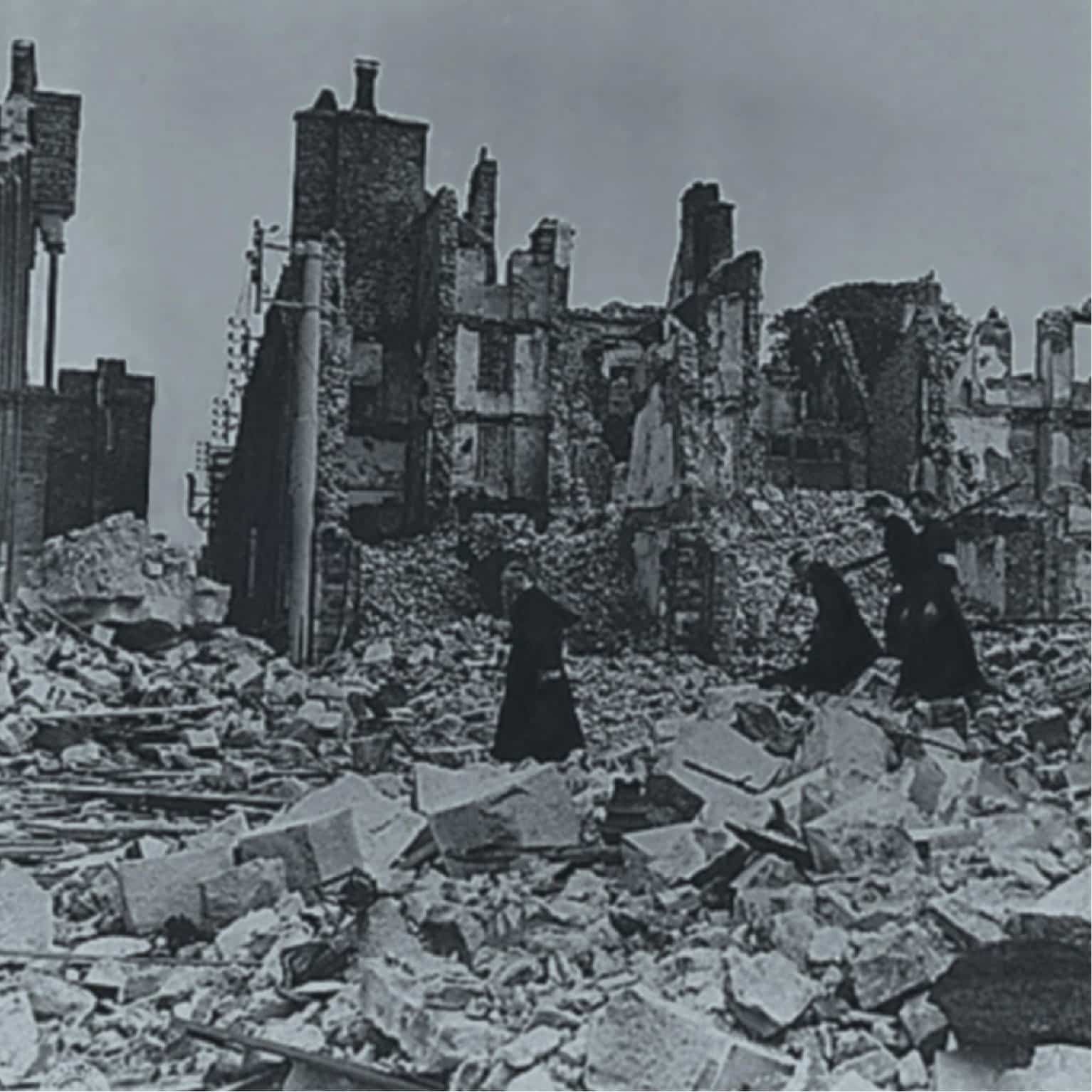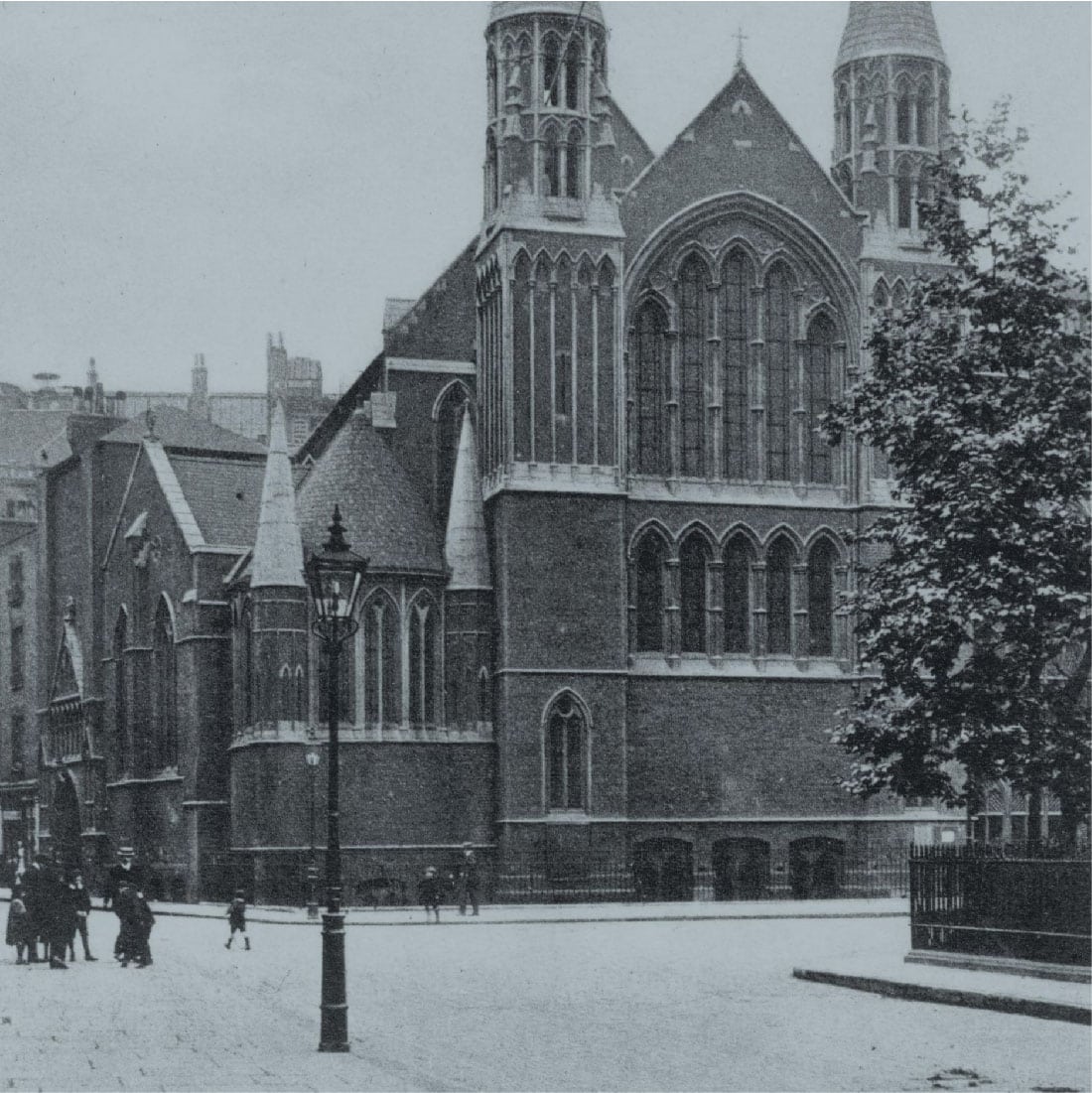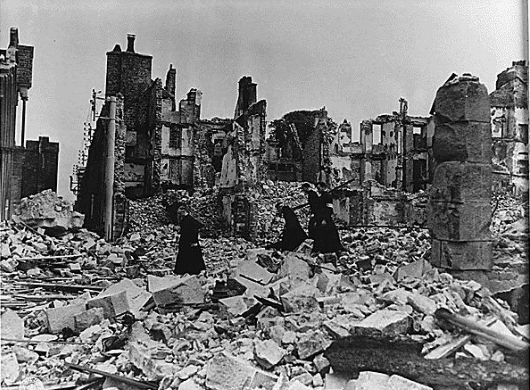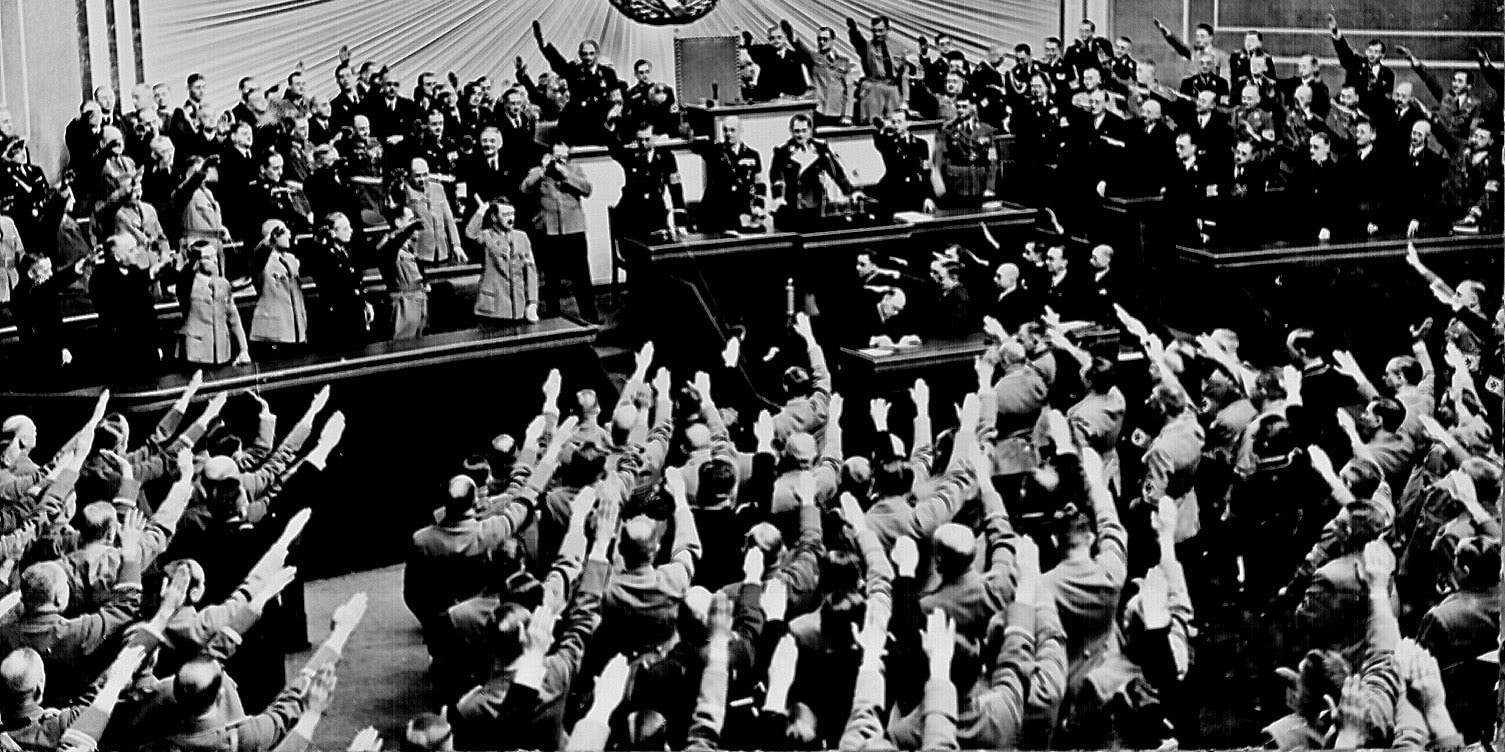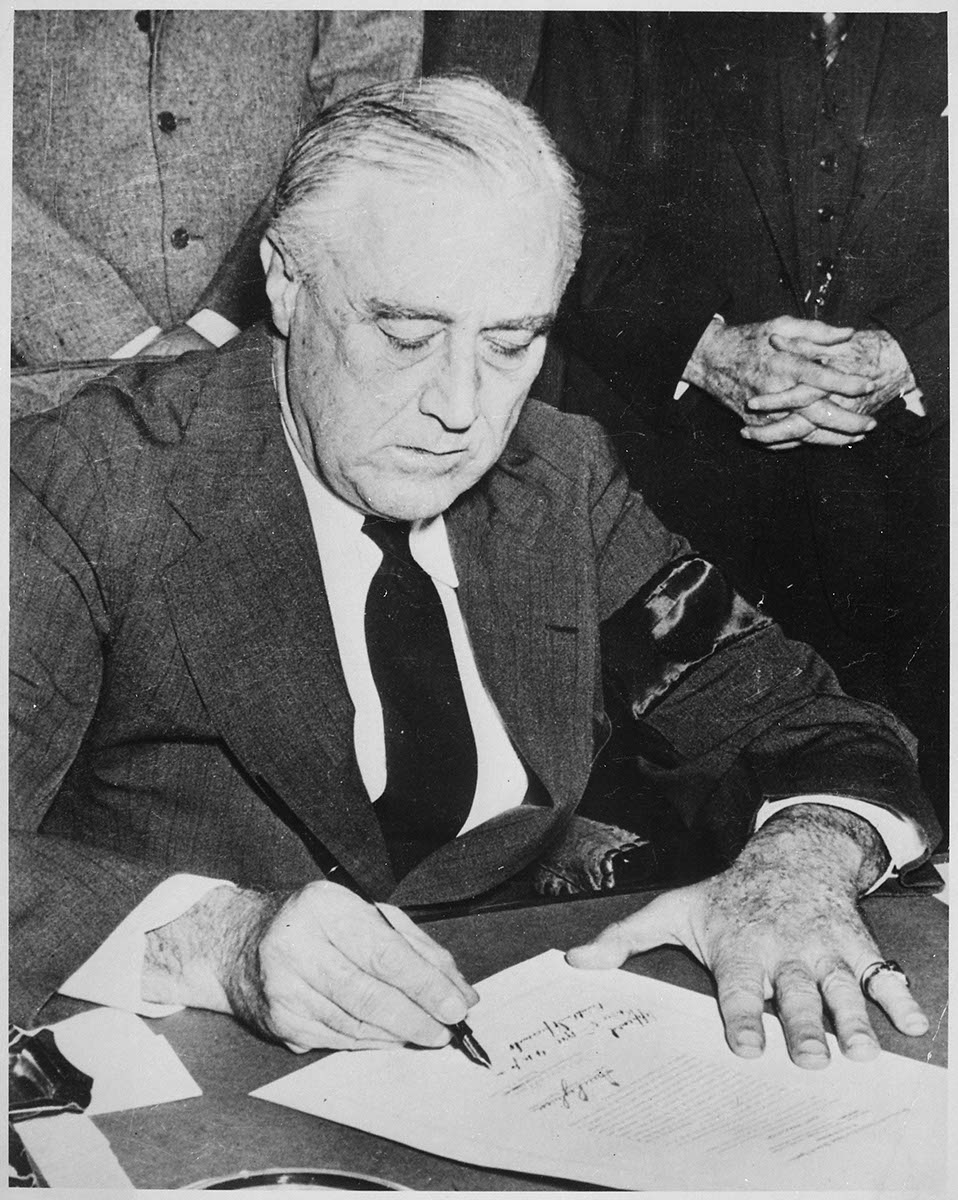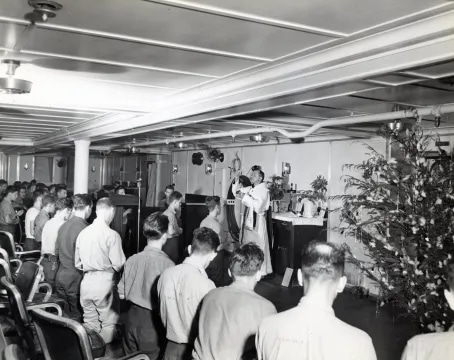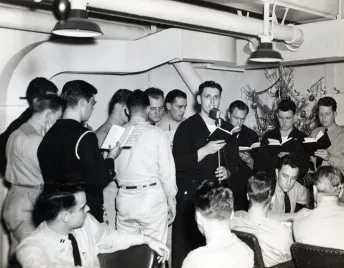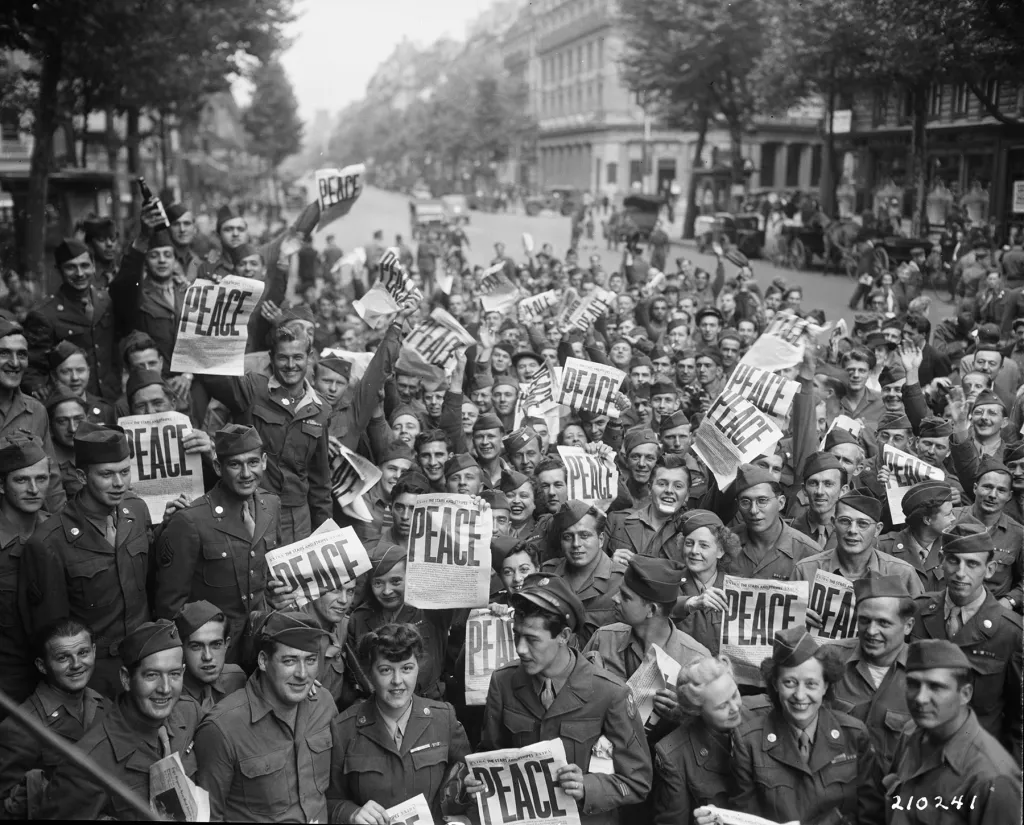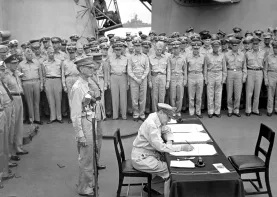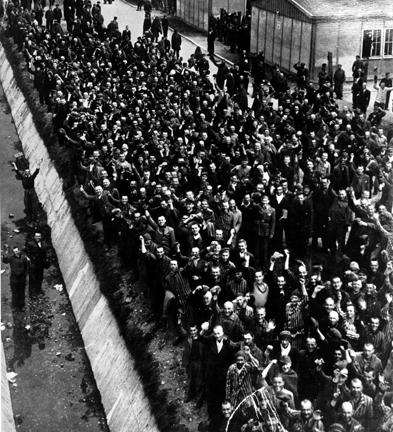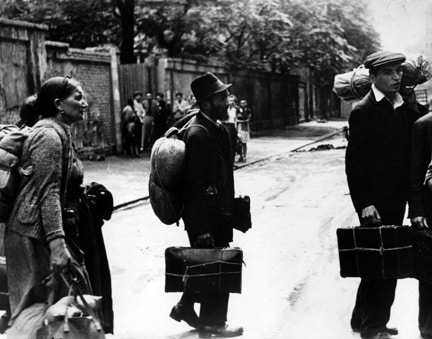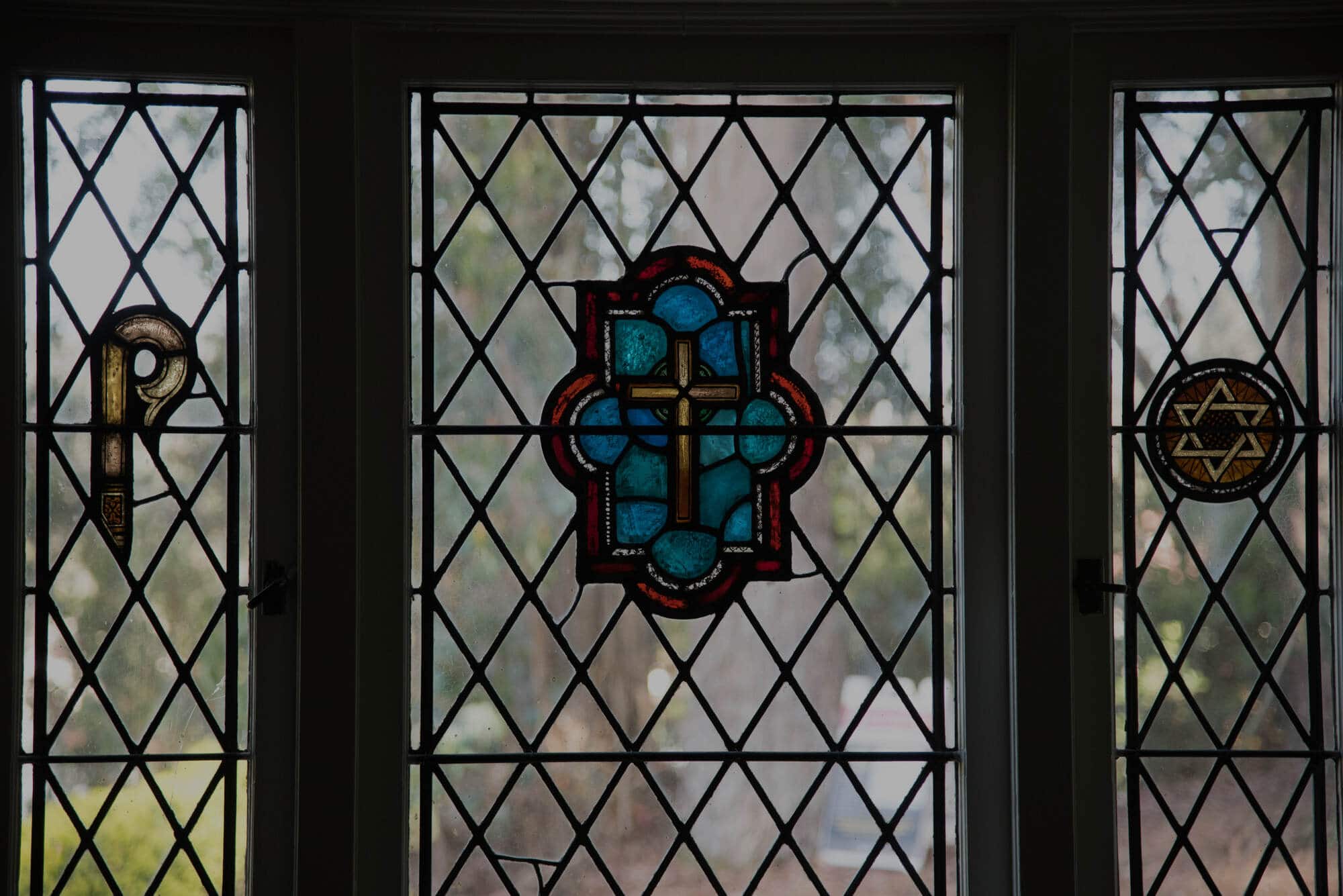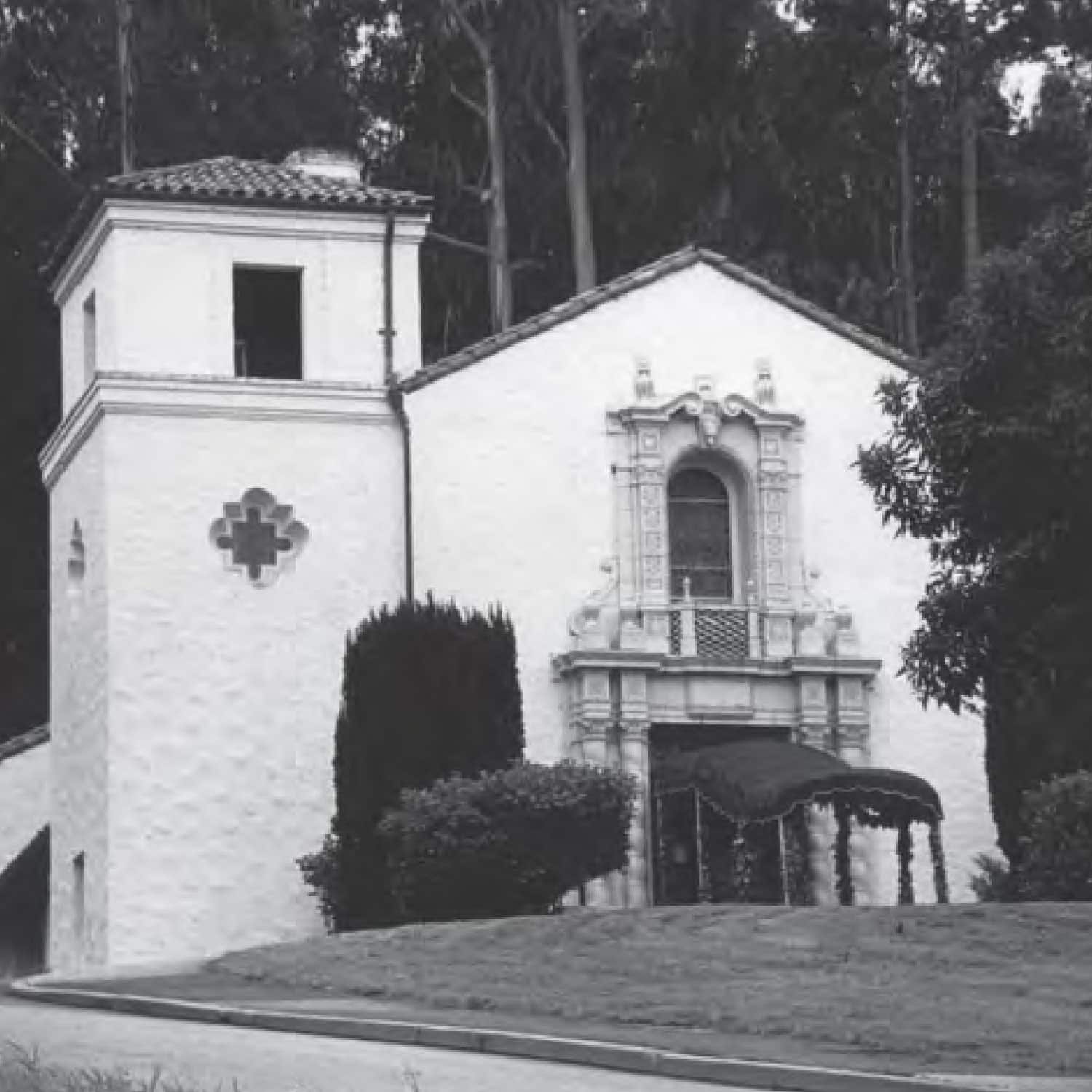Fred’s Journey
Follow Fred’s path through Europe and WWII history
Get a complete picture of the context of the McDonald Peace Windows, through the framework of Fred McDonald’s movement through Europe at the end of the war. Learn more about Fred, World War II history, and the sites he visited through this interactive chronological documentation of Fred’s journey.
Filter the Timeline
Search by Keywords
Art Piece
Country
Site Unknown
March 30, 1946
War’s End
Aside from the moral dilemmas faced at war’s end, there was the practical issue of how to get home and what to do in the meantime. The Army’s answer was to set up temporary universities for the soldiers’ education while waiting for shipment home. Chaplain McDonald was assigned to the Biarritz Army University, where he performed his usual duties and took many weekend excursions to other places in Europe. Finally, in March 1946, Frederick received orders for return to the U.S. Nearly nineteen months after arriving in England and serving his country in the defeat of Adolf Hitler and Nazi Germany, he was going home.
Berchtesgaden, Germany
May 26, 1945
The Berghof
Related Art Pieces
Site Unknown
May 1945
End of the War
Germany
May 1945
Reading the Homily
Site Unknown
May 8, 1945
Homily by U.S. Army Chaplain Frederick A. McDonald
For the Allied High Command,
Many centuries ago, a prophet in Israel charged men with the duty of “Proclaiming liberty—every man to his neighbor.” No text can be more appropriate to this Victory in Europe Day....
Wiesbaden, Germany
April 1945
St. Augustine
Related Art Pieces
Site Unknown
March 15, 1945
Beauty Amidst the Ruins
Before the war, Chaplain McDonald had admired the cultural sophistication and artistic and scientific achievements of Germany. Following the Allied offensive into Germany in March 1945, McDonald and his driver, George Kosnich, took note of the architectural beauty of the churches of Trier despite the surrounding devastation.
Germany
January 25, 1945
Memorial to the Fallen
The Battle of the Bulge lasted for over a month, involving more than 1 million men. Allied forces lost more than 40,000 men in the first three days alone, and there was serious concern that Hitler might succeed in turning the tide of the war with this offensive. Eventually, Allied forces succeeded in pushing the Germans back to their original positions. They also more importantly inflicted the heavy casualties that proved to be the fatal blow for Hitler, and soon after marched into Germany to finish the war.
Bastogne, Germany
January 1945
Cold and Misery
Bitter cold and snow during the Battle of the Bulge made conditions miserable for Allied soldiers. In Bastogne, German forces succeeded in trapping the Americans within the town for many weeks, making conditions there among the worst of the war. Frederick McDonald visited this front line position shortly after its liberation.
Luxembourg, Germany
December 1944
Worship with General Patton
On Christmas Eve 1944, Chaplain McDonald was in Luxembourg as the Battle of the Bulge raged on. Conditions were still dangerous, but the proximity of the front lines allowed for an illustrious visitor. General George Patton, infamous for his bold personality and pride, insisted on attending worship services despite the danger, and Frederick, a fellow Episcopalian, was honored to meet him.
Luxembourg, Germany
December 16, 1944
Battle of the Bulge
Less than six months after storming the beaches of Normandy, Allied forces had succeeded in pushing the Germans out of France. Both sides were now hunkered down, planning their next moves in secrecy. Then, on December 16, the Germans launched the Battle of the Bulge, named because of their success in pushing through the middle of the Allied defenses. It would become the bloodiest battle of World War II.
Thionville, France
November 1944
Thionville
Related Art Pieces
Paris, France
September 2, 1944
Base Camp at Verdun
Chaplain McDonald arrived in Paris on September 2, only a week after the Germans had been driven out. Unlike the ruins found in Normandy, Paris was completely intact and the Parisians were still reveling in the joy of liberation.
Of course we went into Paris and the Parisians were still exulting in the German defection. Some women had a style of sensual and flashy hauteur, which was unlike memories of our hardworking people at home, and most unlike the war-weary British … Whenever one of us was shooting a picture the French would crowd onto the scene.
–Fred McDonald
Related Art Pieces
Paris, France
September 2, 1944
A Taste of Liberation
Chaplain McDonald arrived in Paris on September 2, only a week after the Germans had been driven out. Unlike the ruins found in Normandy, Paris was completely intact and the Parisians were still reveling in the joy of liberation.
France
August 1944
Allied Generals
Bayeux, France
August 13, 1944
Entering the Battle
On August 13, Chaplain McDonald flew to a field near Bayeux, France, and then traveled by jeep 60 kilometers west to a tent-filled apple orchard south of Periers. There he met Major Pierre Boy, who explained that he was now Chaplain of Special Troops, 12th Army Group, commanded by Lt. General Omar Nelson Bradley. While in Normandy during his first days of the war, Frederick was dismayed by the destruction wrought by Allied forces on the French towns and countryside, observing great bomb craters and dead cattle. He was particularly bothered by the shattered churches.
Liverpool, England
August 6, 1944
Waiting for Orders
Chaplain McDonald arrived in Liverpool, England on August 6, 1944. England had already been at war with Germany since July, 1940, and had suffered considerably in the Battle of Britain. He visited a few churches damaged by German bombing. In Coventry he noted that the Cathedral’s charred frame gauntly enclosed the blackened Coventry cross, evoking a grim sorrow. Frederick also visited St. John’s, Red Lion Square, where he found the church completely destroyed. Unlike Coventry Cathedral, it would not be rebuilt. Within a week of arriving in England, Chaplain McDonald received orders for immediate departure to France, the details of which were top secret.
Darmstadt, Germany
February 1, 1944
Russian Chapel
Related Art Pieces
Verdun, France
January 1944
Verdun
Related Art Pieces
Cologne, Germany
May 31, 1942
Cologne Cathedral
Related Art Pieces
USA
December 1941
Enlisting
London, England
August 1940
Church of St. John the Baptist
Related Art Pieces
San Francisco, USA
January 1940
Prelude to War
By 1940, Europe was a much different place. Hitler had succeeded not only in rebuilding Germany but in conquering most of the continent as well. Britain was dangerously close to invasion, and the United States was reluctant to get involved in what many saw as a European problem. Rev. McDonald was aware of the evils of Hitler and sympathetic to the plight of Europeans. From his post at St. David’s Episcopal Church in Portland, Oregon, he became an early proponent of American intervention. He joined the U.S. Army in 1942 and was stationed at Ft. Mason, San Francisco, as an Army chaplain.
Site Unknown
January 1940
Interfaith Efforts
Army chaplains were expected to provide spiritual guidance and healing to all soldiers regardless of religious affiliation. Chaplain McDonald was particularly sensitive to these needs, and was asked frequently to provide comfort and service to Jews, both military and civilian. A Jewish officer, Captain Abner Kurtin, who shared quarters with Frederick and came to know him well, once remarked, “Chaplain, what a great rabbi you might have been.”
Site Unknown
June 1933
Early Years
Frederick McDonald was a lifelong traveler, taking every opportunity to leave his hometown of Seattle in search of adventure. In 1933, during summer vacation from seminary school, he traveled to Europe and was particularly impressed by the progress made in Germany under Nazi rule since being defeated in World War I.
New York, USA
Transport to Normandy
Site Unknown
Being a Chaplain
USA
Being a Military Chaplain & the Importance of Interfaith
USA
Collecting Shards
Saint Hubert, Belgium
St. Hubert
Related Art Pieces
Site Unknown
Thoughts on Hitler
Périers, France
Impressions of War
France
Uncertain Loyalties
Although based in Verdun, Chaplain McDonald regularly traveled to the front lines to conduct religious services for the troops there. He also commuted every Sunday to Luxembourg, and passed by and through many French towns close to the German border, including Metz and Thionville. Sometimes American forces questioned the loyalties of recently liberated locals. In Metz, with the support of many townspeople, the Germans were able to hold out for some time using the city’s ancient forts.
Site Unknown
War and Interfaith
Germany
Dangerous Conditions
Conditions were dangerous for Chaplain McDonald, who often traveled with only his jeep driver, George Kosnich, along areas still controlled by the Germans. Routes were planned based on the latest situation but things could change quickly. On one excursion, McDonald nearly crossed the front lines.
San Francisco, USA
First Assignment to South Pacific
Verviers, Belgium
Verviers
Related Art Pieces
Liebfrauenkirche, Germany
Forgiveness
As a man of faith with a good knowledge of history, Chaplain McDonald knew that the real path to lasting victory was through forgiveness and reconciliation. But it would be difficult, given the barbarism of Hitler and Nazi Germany. On his visit to the Liebfrauenkirche in Trier, Frederick found a scene that was poignant and telling.
Germany
The German Paradox
During the war, many Europeans and Americans found it difficult to believe that Germans could act with such violence and vulgarity. However, the true horror of Nazi Germany came to light with the discovery of concentration camps where so many Jews and others deemed undesirable by Hitler were interned and murdered. Chaplain McDonald made a special point of visiting the concentration camp at Dachau to see the atrocities firsthand.
San Francisco , USA
A Home for the Windows
The Main Post Interfaith Chapel is a fine example of Spanish Colonial Revival architecture, with the same baroque features that embellish California’s early mission churches. Visitors frequently comment on the “sweetness” of the Chapel and its surroundings. The Main Post Interfaith Chapel is a jewel in the crown of the Presidio of San Francisco, and the McDonald Windows will enhance the experience of the thousands who visit each year.
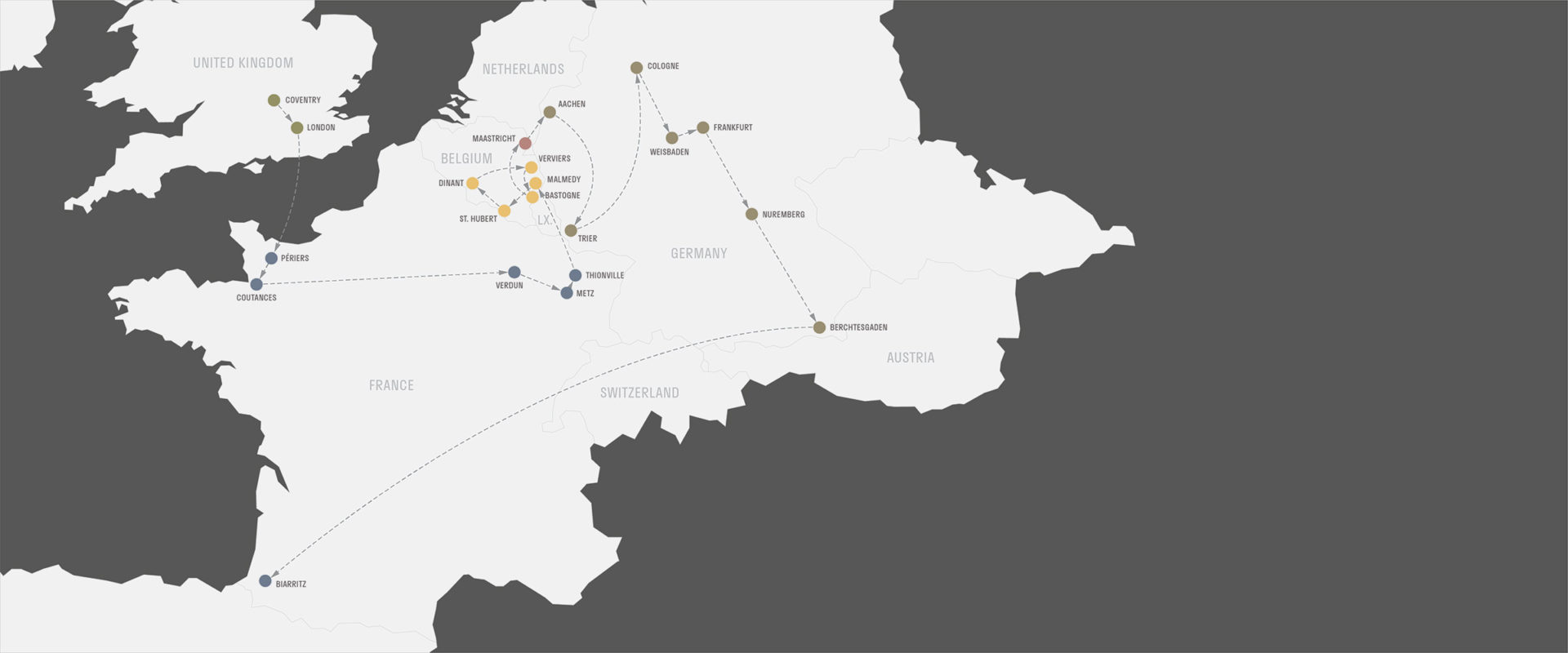
THIS MAP TRACES CHAPLAIN FREDRICK
MCDONALD’S TRAVELS THROUGH
EUROPE DURING AND AFTER WW II.

